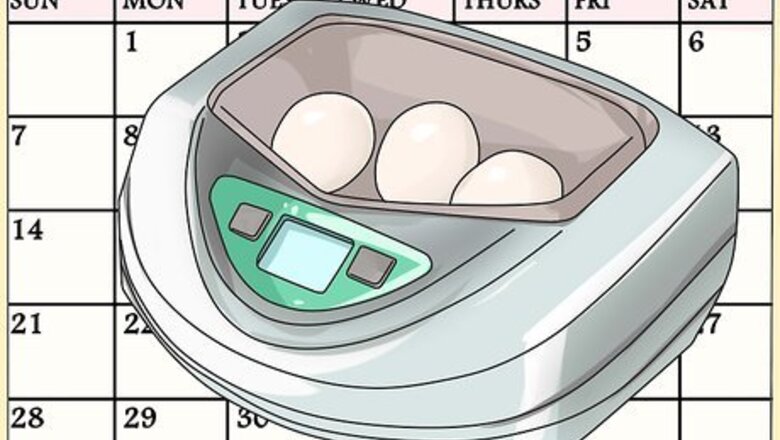
views
Inserting Dye
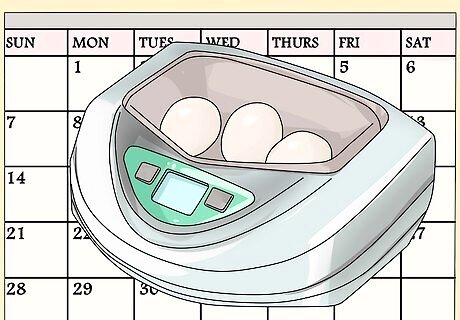
Use chicks in their 11th to 14th day of incubation. It is possible to inject eggs that have been incubated anywhere from 10 to 19 days, but the 11th to 14th period is ideal. Only one injection is necessary if done at this time.
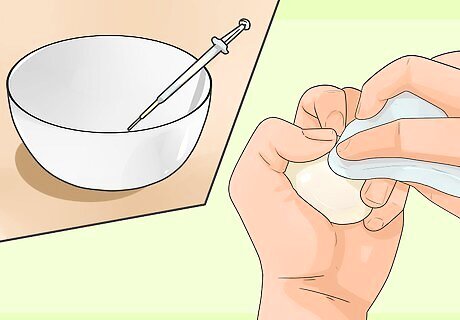
Sterilize the egg and needle. Sterilize the outside of the egg and the hypodermic needles. You do not want to introduce bacteria to the embryo which may harm it. Use alcohol pads of 95 percent isopropyl alcohol to thoroughly wipe down the egg and needles. Let the eggshell and utensils dry. Make sure they not become contaminated while drying. For example, place them on a sterile gauze pad.
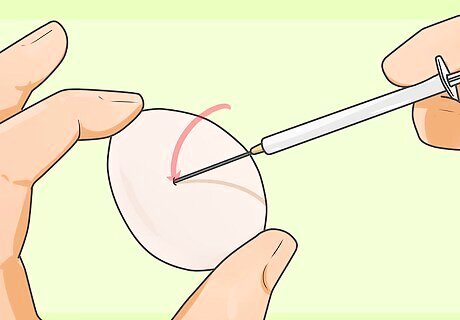
Puncture the eggshell. With the hypodermic needle, slowly and carefully make a small hole in the shell about one half-inch from the small end of the egg. Do not insert the needle too far as this will damage the embryo. Use a different needle for each egg to ensure sterility.
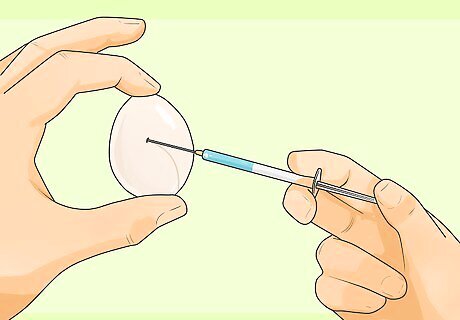
Insert the dye. Extract .5 milliliters (0.02 fl oz) of dye from the bottle and insert the tip of the needle into the hole.Slowly and carefully inject the dye into the egg to prevent overflowing. Insert the dye just under the shell and membrane. Use vegetable food coloring as the dye. Use a different needle for each color to keep colors pure.
Caring for the Eggs

Seal the hole. Close the hole in the shell with a small drop of melted paraffin, making sure to cover the entirety of the hole. Paraffin can be found at many craft stores. You can use an adhesive bandage if no paraffin is available.
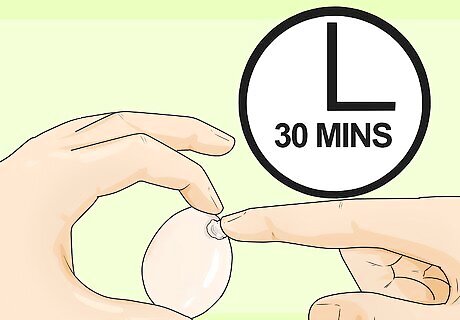
Insert dye and seal the hole within 30 minutes. Do not keep the eggs out of the incubator longer than 30 minutes for the safety of the embryos. Embryos can be damaged if not kept at a high temperature.
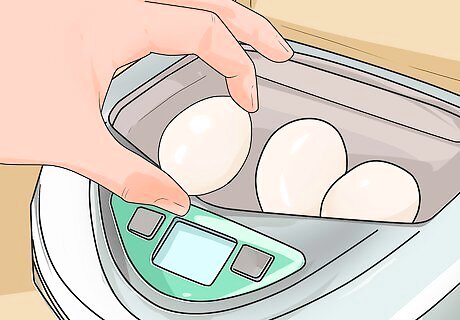
Return the eggs to the incubator. Chicks typically take 21 days to hatch. Incubate chicken eggs between 99 and 102 degrees Fahrenheit with 50-65 percent relative humidity.




















Comments
0 comment